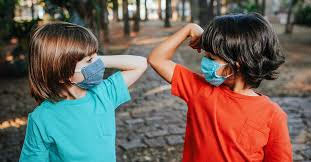GROWING evidence is showing that Covid-19 affects kids differently than adults.
Children experience lower infection rates, accounting for less than 10 percent of cases in the United States.
Infectious disease specialists say there are several factors that seem to protect children: immunity to seasonal coronaviruses, underdeveloped sinuses, and fewer chronic health conditions.
A new model from researchers in Israel found that kids are half as susceptible to Covid-19 compared to adults.
The report published Thursday, Feb. 11, in PLOS Computational Biology also found that people under 20 are less likely to transmit the virus to other people.
Growing evidence has showed that Covid-19 affects kids and younger people differently.
Children experience lower infection rates, accounting for less than 10 percent of cases in the United States.
When kids do get the disease, the symptoms are typically milder.
They also appear to transmit the virus less and are not primary drivers of community transmission.
Dr. Sharon Nachman, the chief of the Division of Pediatric Infectious Diseases at Stony Brook Children’s Hospital, said the lower rates of infection in kids are likely due to many factors.
“These could include a different immune response to virus as compared to adults, the frequent lack of comorbid conditions in many children, and ongoing/frequent exposures to other coronaviruses, and possibly some cross-variant nonspecific immunity,” Nachman said.
The researchers evaluated transmission data of 637 households in Bnei Brak, Israel.
All individuals underwent PCR testing, and some of the participants were given serological antibody tests.
The researchers then took those findings and adjusted them to reflect the coronavirus’s overall infection and transmission rates.
They found that kids are 43 percent as susceptible to Covid-19 compared to adults.
The findings suggest kids transmit Covid-19 far less than adults. That is, the ability of children to pass the virus is about 63 percent compared to adults.
Children are also less likely to produce positive PCR tests, which looks for genetic material of the virus, even when they have the virus.










